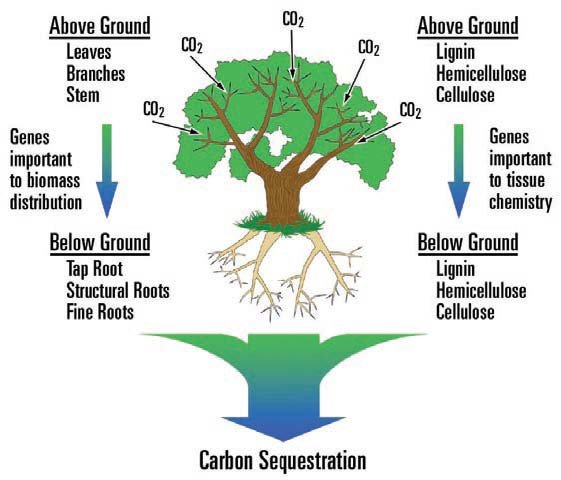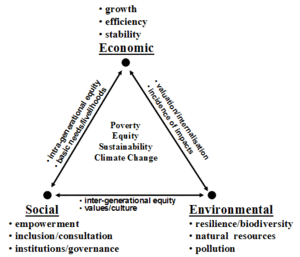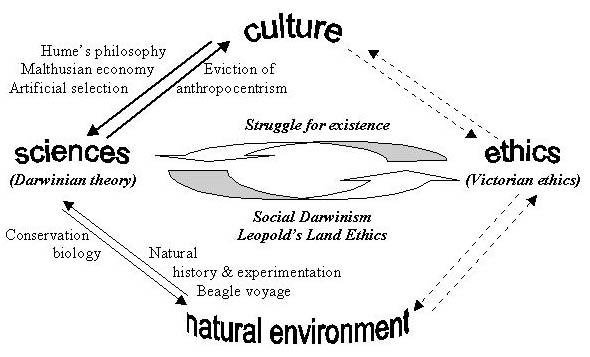Introduction
The world is suffering from effects of environmental damage; as people exploit natural resources, the environment is damaged. Other than overexploiting or misusing natural environment, individuals and companies are disposing their wastes in appropriately resulting to further damage to the environment.
Environment conservers have advocated for different methods of protecting the environment and restoring its natural form; the approach used include use of conventions and protocols that recommend and commit countries to abide to the recommendations.
The effects of greenhouse gas (GHG) emissions were noted in early 20th century, the realization resulted to the signing of Kyoto Protocol by 37 industrialized countries and the European community. One method that has been advocated for to reduce the effects of greenhouse gases, particularly carbon dioxide, is carbon sequestration (Baker, 2006). This paper discuses carbon sequestration in relation to its environmental impact and its potential to resolve environmental problems.
Carbon sequestration
According to Wilson and Gerard in their book called “Carbon Capture and Sequestration,” carbon sequestration refers to geo-engineering process through which carbon dioxide is removed from the atmosphere and deposited into a reservoir. In lay-man’s language it is the process through which carbon dioxide in the atmosphere is removed to clean up the air then used for other economic activities.
Other than removing carbon dioxide from the atmosphere, the carbon sequestration engages in capturing, storage and enhancing natural biogeochemical cycling of carbon. In whichever the approach taken, carbon sequestration aims at cleaning the atmosphere that the right amount of carbon remain (Ernesto & Zedillo, 2008).
When carbon has been controlled, the world atmospheric challenges from global warming or climatic changes are controlled; carbon sequestration has been crowned as the best method through which nations and the world in general can slow the atmospheric and marine accumulation of greenhouse gases, which are released by burning fossil fuels. The processes of carbon sequestration can be divided into three main ways through which they take place as chemical process, biological, and physical sequestration (Faust, 2008).
Biological carbon sequestration
When adopting bio-sequestration, the process involves having natural products that can use carbon dioxide in the air or ones that can store the gas; the process involves the storage of carbon in forests, soils, bogs, in ocean ecosystems, among other natural users of carbon dioxide.
The move approaches reduction of carbon dioxide in two main approaches; restoring the natural form of the environment and adopting production mechanisms that does not harm the environment. Human beings have been blamed of damaging the eco-system, through processes like degrading soils, cutting down forests, polluting and acidifying the ocean, when the ecosystem has been damaged, the effect is a world with unpredictable climatic conditions and global warming is real.
With carbon sequestration, domestics and industrial users of environmental products are encouraged not to damage the ecosystem; they are advised to use best resources management approach which includes using biological fertilizers instead of artificial ones (Faust, 2008).
When using increased organic inputs to farm soils, and low-tillage farming systems the agricultural sector is fighting the effects or the growth of global warming. Other than reducing the effects of global warming, it has been proved that organic farming is more economical and leads to higher produce.
In oceans, the oceans are fertilized, again using natural fertilizers commonly referred as organic fertilizers, to grow ocean plants like algae. The approach of bio-sequestration aims at improving the natural ecosystem operations; plants generally use carbon dioxide to make their own food, thus when they have been increased, the usage of carbon will be higher resulting to a clean environment.
An article in Science Journal 2004 stated “As well as enhancing food security, carbon sequestration [in soils] has the potential to offset fossil fuel emissions by 0.4 to 1.2 gigatons of carbon per year, or 5 to 15% of the global fossil-fuel emissions” (Chiras, 2009). The diagram below shows how forests or plants can control carbon dioxide in the atmosphere:
Chart 1

Physical sequestration
Physical sequestration is also referred to as Geological Sequestration or underground carbon injection; under the atmosphere purification method, carbon dioxide is stored in underground reservoirs and in ocean bodies. The areas that the carbon produced in different production places goes to include deep in the ocean, layers of porous rock that are saturated with brine commonly called saline formations, and depleted oil and gas reservoirs.
The belief is that these areas had been able to contain hydrocarbons for millions of years thus they have the capability of containing carbon dioxide for such long times. When using the approach, focus shifts on redirecting carbon produced in different production processes to areas that it will not affect current generation (Oberthür & Ott,1999).
When the above approach has been adopted, the main concern of the users is to ensure that the rate of carbon emission in the atmosphere is reduced. With reduced atmospheric concentration of carbon, the atmosphere is clean for better living. With clean environment, issues like global warming and changing climatic conditions becomes issues of the past.
Chemical carbon sequestration
When using chemical carbon sequestration, it involves adopting some chemical reaction that can assist to remove carbon dioxide from the atmosphere and putting it in good use. Chemical reactions can be used to tap carbon in CO2 form to make stable carbonate mineral forms that can be used for industrial use or are less harmful to the environment; the process in chemical terms is called carbon sequestration by mineral-carbonation or mineral sequestration.
Natural environment contains resources in an un-exploited manner; this gives human beings the opportunity to exploit them and cater for their needs; the challenge facing the world is over exploitation of the resources.
The rate of effectiveness that current generation adopts determines whether the world will be able to feed its population and affects developments of current and future generations; with the realization of need to feed current generation and future ones, sustainable development environmental management approach was developed.
Sustainable development is an exploitation pattern that advocates for optimal resources utilization by current generation without limiting the level at which future generations will meet theirs. According to the method of exploitation, resources are classified as exhaustible and non-exhaustible; current generation should almost aim at preserving the exhaustible resources.
It is ethical and morally upright to produce ones products but does not limit the rate at which another person will produce his; with carbon sequestration current generation is ensuring that they have made their production but not affected climate patterns or facilitated global warming. The future generation will find the atmosphere saline for their activities and their climatic patterns will be predictable for sustained development.
Some of the resources that nature has provided to human beings include climate, minerals, fertile soils, water, animals, air, wind and atmosphere among others; these resources are at the risk of being damaged by uncontrolled carbon in the atmosphere, with carbon sequestration such effects will be reduced.
When exploiting resources in a sustainable manner, it involves use of technology and taking measures to ensure that efficiency is upheld. Other than taking care of future generation, sustainable development theory aims at meeting current generations needs; when the level of carbon has been controlled using carbon sequestration methods, human beings are able to earn a decent living where they can feed themselves adequately (Chiras, 2009).
According to IISD and ICTSD article on sustainable development the current world environmental damage has resulted from human activities and actions; however if the generation has the will, they can undertake their activities and not limit the level at which future generation will undertake theirs.
According to the article, the diversity that different countries have on the resources has enhanced global trade. Over exploitation and overuse of these natural sources have contributed to environmental damage, people are utilizing available resources at a fast rate than they the nature can restore them.
With carbon sequestration, the ecosystem will be enhanced that nature will restore its natural form. Sustainable development theory advocators are of the opinion that governments and international bodies have a vital role to play to develop sustainable developmental measures; this can be done through developing policies and mechanism to conserve the environment.
Environment conservation is of global concern where collaboration of all parties involved is required to conserve and restore the environment; carbon sequestration has been tested and provided to have double effect on the people, reducing carbon dioxide and increasing food production.
Conserving the environment does not take forced policies but they are policies that the population can live with effectively; this call for continuous trainings of the people and ensuring legislations to see the enforcement of the policies has been enacted (Wilson & Gerard, 2007). The chart below shows the integrations of suitable development:
Chart 2

Conservation ethics
Developers of conservation ethics are of the opinion that it is ethical and morally right for people to conserve the environments they are living in; the main advocacy of the ethical theory is that the environment is of great importance to current generation and the future ones. Again nature is believed to have solutions to all human needs thus conserving nature using different methods is the right approach to better live hood.
Advocators of conservation ethics are also referred to as shallow ecology approach as they emphasis on preservation of the environment. Carbon sequestration is seen as one method through which the world can conserve the goodies that nature provides; it does so by limiting emission of carbon dioxide in the atmosphere thus reducing the rate of growth of global warming and changes in climatic patterns.
It is under conservation theory that Kyoto protocol and the three agreements reached in Rio in 1992 were based; Kyoto protocol was ratified in Japan, on 11 December 1997 aimed to be fully implemented by 16 February 2005. The protocol aimed at reducing the rate of emissions from production; developed by United Nations Framework Convention on Climate Change, it targeted ensuring that the natural state of the environment has been restored and maintained.
Kyoto was ratified by 37 industrialized countries and European community; they had their main aim as ensuring that emission of green house gasses was reduced by 5% below their level in 1990 by the end of 2010. Carbon sequestration is seen as one framework or approach that the Kyoto protocol bases on; the protocol first appreciate that the world need producing to feed its population, thus the best that can be done is to ensure that producing do take place but any damage as a result has been mitigated.
The three agreements reached in Rio in 1992 noted that among the major emitters of green house gasses is burning of fossil fuels; with modern ways of physical Carbon sequestration, carbon emission from fossil fuels can be tapped and stored in a manner that will not pollute the environment.
The Rio Agreement in line with Kyoto protocol recommended that if each country was to reduce its level of emission, then global warming could be reduced; one way that the agreement recommended for reducing greenhouse effects is removing the wasteful gases from the environment.
To ensure that objectives of Rio agreements and Kyoto have been fulfilled some measures were seen to be effective; one of the ways is adoption of clean technology, this is a technology that does not emit or emits minimal green house gases. Such are approaches that have been supported by carbon sequestration (Kheshgi, 1995).
Humanist theories of environmental ethics
Under the ethical theory, moral status and ethical worth, such as sentience of human beings is put to task. According to the theory human being bear the largest blame for damage of the environment; however if people can change their perception and way of doing things, there is hope that the world can restore its natural state.
Humanist theories include domestics and industries to come up with the right mechanisms through which they can meet their individual or corporate needs without destroying the environment. Some of the strategies advocated for include the use of technology and organic forms of doing things like farming.
In organizations, humanist theorists are of the opinion that decisions made by organizations have an effect on the environment the organization operates in, if an organization fails to incorporate the effect it has on the environment in its corporate decisions, then its limiting its going on concern philosophy (Batjes, 1996).
According to action-based theories of morality, an action is considered ethical or unethical after considering its outcomes; thus when making decisions organizations need to be “human” enough that they make such decisions that will not have negative effect on the environment.
When using carbon sequestration the focus is on ensuring that the level of carbon in the atmosphere has been maintained at optimal levels; an optimal level is attained when the effects of the carbon is not negative in any form. The chart below summaries the integration of ethics and environmental conservation:
Chart 3

Conclusion and recommendations
With growth in world population and growing advocacy on diversity, there is need for collaboration of governments, international bodies, private businesses, individuals, and organizations to conserve the environment. Conservation takes the form of ensuring that the natural state of the environment has been restored as well as ensuring that there is no further damage to the environment.
Carbon sequestration entails some simple and complex approaches that people can adopt to preserve conserve and restore the sanity of the environment. The environmental approach uses the notion that environmental conservation is the responsibility of every society member as everyone has a role to play.
For example farmers in most cases are regarded as people of low income, however if they continue using fertilizers in their farms, they are risking environmental damage. However they can contribute to slowing the growth in global warming and changing climatic conditions by practicing organic farming. Other than the low earners in an economy, carbon sequestration also targets the well to do, it involves in processes like physical carbon sequestration which are expensive but effective procedures.
From an ethical angle, it is ethical and morally upright to have generations who can enjoy the sanity of the environment. When living in a world with pure atmosphere, human beings are less likely to suffer disease related to unfriendly living conditions. On the other hand, they will be able to produce high from the facilitated operation of eco-system. Carbon sequestration aims at ensuring that the atmosphere has the right amounts of carbon to facilitate the natural operating of eco-system and slow global warming.
Carbon sequestration is a pillar of sustainable development. Sustainable development looks into the needs of current generation and future generation; however it can only be attained if human kind at individual, corporate, government, and international level recognize that they have a role in environmental conservation. Governments, organizations and individuals should embrace carbon sequestration as it will facilitate attainment of sustable development.
References
Baker, S. (2006). Sustainable development. London: Routledge.
Batjes, H. (1996). Total carbon and nitrogen in the soils of the world. European Journal of Soil Science ,47 (2), 151–163.
Chiras, D.(2009). Environmental Science; spotlight on sustainable development. New York: Jones & Bartlett publishers.
Ernesto, Z. & Zedillo, E. (2008). Global warming: looking beyond Kyoto. Washington: Brookings Institution Press.
Faust, R.(2008). Global Warming: Greenhouse Gases and the Ozone Layer. New York: The Rosen Publishing Group.
Kheshgi, H. (1995). Sequestering atmospheric carbon dioxide by increasing ocean alkalinity. Energy, 20 (9), 915–922.
Oberthür, S. & Ott, H.(1999). The Kyoto Protocol: international climate policy for the 21st century. New York: Springer.
Wilson, E., & Gerard, D. (2007). Carbon Capture and Sequestration. New York: Blackwell Publishing Limited.